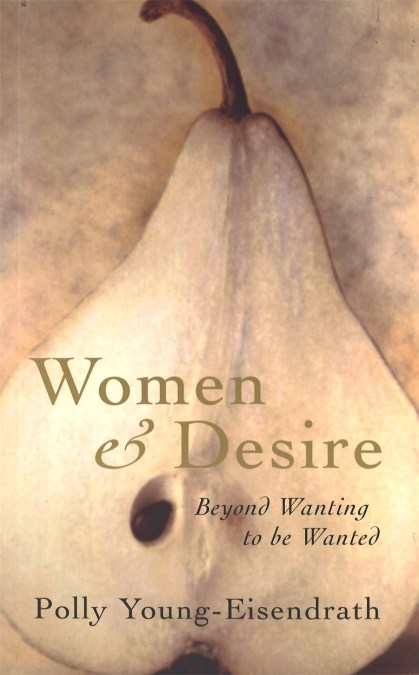Many years ago the famous French psychoanalyst Jaques Lacan said that women want to be wanted, not to be loved. Now, in her fascinating book about female desire and empowerment, internationally renowned Jungian analyst and author Polly Young-Eisendrath explores this idea further. Women look to others to provide them with confidence, happiness and self-esteem. This reliance produces a need to please others, in order to receive praise. We please others by trying to conform to an image, rather than finding out what our real needs are. If this image conflicts with our inner needs we can become resentful, frustrated and out of control. Often we deal with this unhappiness by trying even harder to make ourselves the kind of spouse, lover, mother or worker who is wanted and desired. We have to abandon these female images and discover our own real needs, without fear or shame. Only by learning to voice these needs clearly, and meet them from within, can we escape the cycle of ‘wanting to be wanted’.
Newsletter Signup
By clicking ‘Sign Up,’ I acknowledge that I have read and agree to Hachette Book Group’s Privacy Policy and Terms of Use
Reviews
"What do you want?" Polly Young-Eisendrath puts that question--as bewildering as it is bold--at the centre of her study of femininity and female desire. "As a psychoanalyst and a Buddhist," she writes, at the very beginning of Women and Desire. Beyond Wanting to be Wanted, "I have learned many theories and explanations of desire, but the problem of female desire ... always remained". It is female desire as a problem--a problem with the potential for (better) resolution--which drives this book from its psycho-political analysis of the vicissitudes of femininity in patriarchy to Young-Eisendrath's sensitive, and lively, presentation of her clinical work with the women and couples who turn to psychotherapy for help. In both instances, she is keen to exploit the interface between myth and psychoanalysis, folktale and the possibility of social change: in particular, the potential for reshaping women's powerful attachment to the dramas of "wanting to be wanted". In the name of that reshaping, Young-Eisendrath mines the wisdom of legend and folktale--The Marriage of Sir Gawain and the Lady Ragnell, for example, is read for its exploration of the pleasures, and dangers, of female desire and self-determination--in order to track the process of becoming "Subject" rather than "Object" of desire. The aim of Women and Desire is unashamedly therapeutic: from her analysis of the evil power of the "hag" to her presentation of Diana, Princess of Wales as the 'cultural muse of our time', Young-Eisendrath is concerned with human development, the potential for women's growth and freedom opened up by 'making our own choices every step of the way'--an optimism supported here by an eclectic mix of myth, therapy and cultural analysis.
